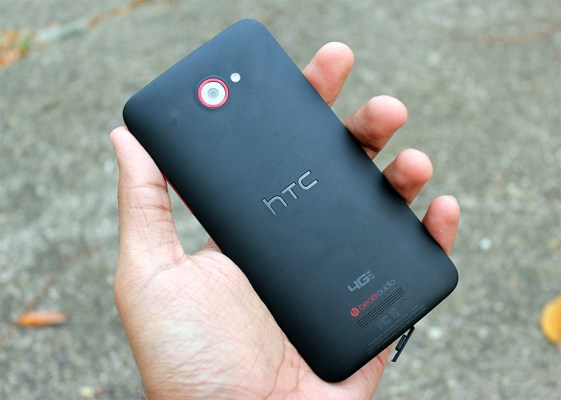With Mobile World Congress already on the horizon, it’s hardly a shock to see a new batch of smartphone leaks and rumors starting to make the rounds. HTC never fares well when it comes to keeping their new devices a secret, and today may be no different — the ever-listening Evleaks seems to have come through with new details on HTC’s forthcoming flagship, the Jelly Bean-powered M7.
Contrary to an earlier report from HTC Source, the M7 could sport a smaller 4.7-inch “SoLux” display instead of the 5-inch Super LCD2 panel that debuted on the J Butterfly and its U.S. cousin the Droid DNA. HTC doesn’t seem to be shying away from full HD though — the M7’s screen is still said to run at 1080p, which makes for an astonishing pixel density of 468ppi (the iPhone 5’s display comes in at 326ppi, while the Droid DNA’s 440ppi screen slips to second place).
Of course, pixel density isn’t all that goes into making a truly great display — the DNA had a mostly wonderful screen, but it sadly fell short when it came to overall brightness. Thankfully, Evleaks also notes that the so-called M7’s SoLux display also bolsters “viewing angles, outdoor visibility, and color accuracy,” which could go a long way in making the M7 the Android phone to own (for a while, at least). Meanwhile, a 1.7GHz quad-core Qualcomm chipset is said to be running the show, along with 2GB of RAM and 32GB of internal storage — there’s no word on expandable memory yet, though I’ve got my fingers crossed that carriers won’t step in and make any questionable decisions.
Speaking of carriers, the juiciest new tidbit is also the most curious. Evleaks notes that the M7 will eventually find its way onto Verizon and Sprint’s store shelves after its international release (said to take place in Q1, remember?), and alludes to the possibility that the handset will be the first HTC device to be offered by each of the Big 4 U.S. wireless carriers in a long time. That may well be the case (I certainly hope it is), but some of these carriers tend to impose more dramatic changes of design than others, and the end result could be a device that falls short of the standard set by the international model and its all its inevitable variants.
